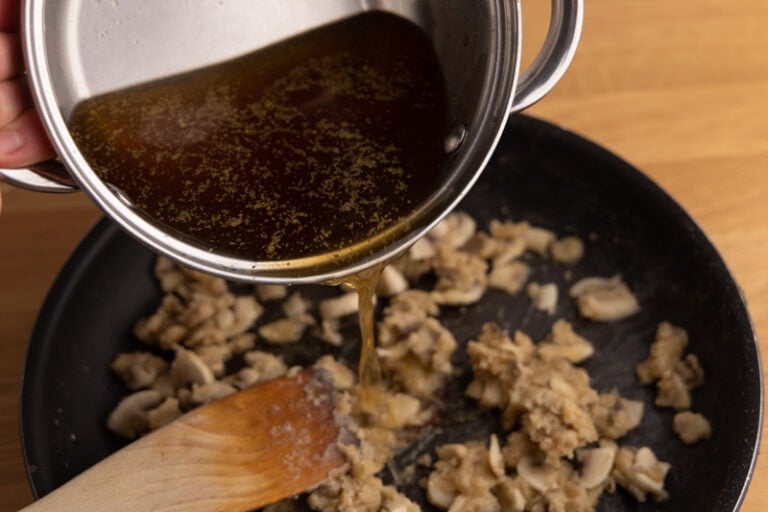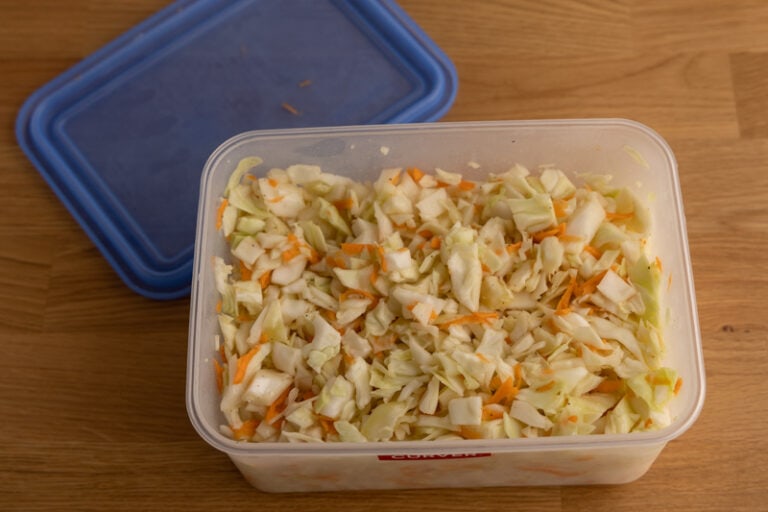Does Sushi Go Bad?
While restaurants that serve sushi are almost everywhere, you prefer to enjoy it at home. So you’ve grabbed a ready-to-eat bento box of sushi on your way home.
Unfortunately, your evening plans changed, and the package still sits in the fridge the next day. Does sushi go bad?
Or maybe you’ve never had sushi before, and you’re thinking about trying it out. You’re a bit shy and don’t want to embarrass yourself in a Japanese restaurant, so you want to test it at home first. Plus you have no idea how to eat with the sticks.
You figured buying a package prepared at the supermarket would be a good start. But then you remembered that the fish in sushi is often raw, so you started thinking if that sushi is safe to eat.

Either way, if you’re a sushi beginner, this article is for you. In it, we talk about storage, shelf life, and spoilage of store-bought sushi. We cover both bento boxes and sushi prepared and sold in grocery stores.
How to Store Sushi
Sushi requires refrigeration, period. If you’ve bought a bento box with a sushi set, put it into the fridge once you get home, and take out soon before eating.
Same thing if you’ve purchased a sushi set prepared in your local grocery store. For the dish to last the longest, keep it in the far corner of the refrigerator, where the temperature is quite stable.
If you’ve opened the box or container and didn’t manage to finish it in one sitting, you can store the leftovers for a short period.
Transfer the leftover sushi to an airtight container and refrigerate. That will keep any odors from the fridge at bay and slow down drying out of the dish. These guidelines apply to homemade sushi too.
Remember not to crowd the container, as that will likely mess up the texture of the sushi, and possibly ruin the experience. For food like sushi, appearance matters.

Please note that you likely won’t find your sushi as tasty tomorrow as it was today. Because of that, there’s another solution besides storing the prepared dish.
Instead, you can eat the fish (as it’s the most expensive part), and discard the rest (rice, nori, etc.).
If you’re like me and try to avoid food waste at all costs, follow the storage instructions above. But I know some foodies out there prefer eating the most expensive ingredient at its finest quality and don’t mind getting rid of the rest. It’s up to your personal preference.
Don’t try to freeze the sushi, you won’t like it after thawing.
How Long Does Sushi Last
Sushi is infamous for its short shelf life. Ideally, you would eat it right after a chef presented it to you on a plate. But of course, that’s not the case when it comes to store-bought sushi.
If you’re buying a prepared bento box of sushi sold refrigerated, it always comes with a date on the label. Usually, it’s a sell-by or use-by date. And because in most boxes there’s raw fish or other seafood, I suggest you stick to that date.
If you’re wondering what’s the shelf life of such a box, it depends on how it’s prepared and packaged. It usually is between a few days up to a week or so.

If you’ve chosen a package of sushi from an unrefrigerated display, consume it within 24 hours if it has raw seafood, and up to 3 days if not. Of course, throw the package into the fridge right after you get home.
Before buying sushi from the display, make sure it’s fresh. There are two ways to do that. If the sushi is delivered, buy it early in the morning right after it’s delivered. If it’s done in-house, choose a place with high turnover to ensure freshness.
| Fridge | |
|---|---|
| Sushi (packaged, sold refrigerated, unopened) | Use-by |
| Sushi (packaged, sold refrigerated, opened) | 1 day |
| Sushi (sold unrefrigerated on display) | 1 day |
Please note that the periods above are for best quality.
How to Tell If Sushi Has Gone Bad
First of all, if it’s past the date on the label, throw it out. Maybe it’s still safe to eat, but in case of raw seafood, it’s always better to err on the side of caution.
Now let’s talk about signs of spoiled sushi. First off, check the rice and the fish. If the rice has hardened, throw it out, as the sushi won’t be any good.
When it comes to the fish, check for discolorations or if it’s slimy. In either case, discard the dish. As usual, make sure the whole thing passes the sniff test too.
If the sushi looks, feels, and smells okay, and it’s not past the freshness date, feel free to eat it. Of course, if you notice anything off when it comes to taste, stop eating, and throw out the whole thing.
Rotten Records: Share Your Snap!
Caught some food past its prime? Upload your photo to “Rotten Records” and help others spot the signs of spoilage. Every image makes our food community safer and more informed!





